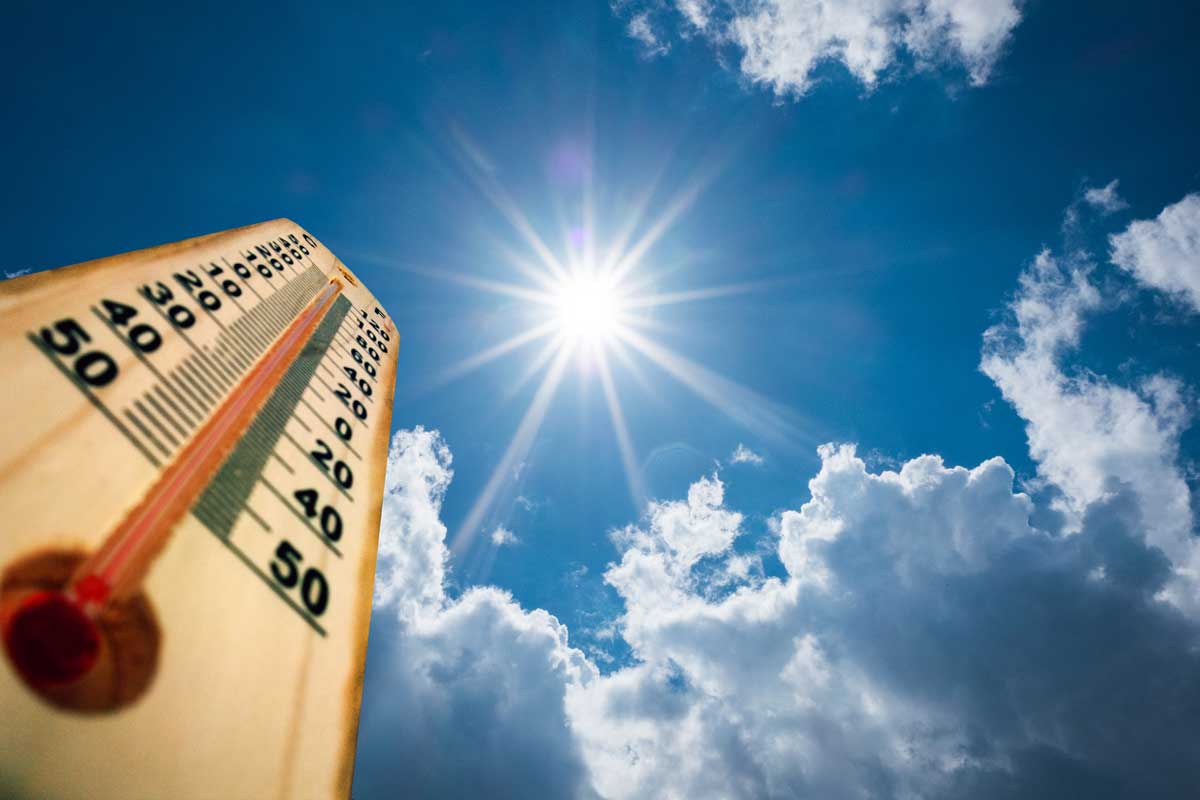Nearly 5.5 million Americans are diagnosed with skin cancer every year. It’s currently the most common form of cancer not only diagnosed in the U.S., but around the world. With sun exposure being the cause of nearly 90% of all skin cancer cases, it’s important that we understand what sun damage is and how we can protect our skin to the fullest.

Florida — a state that gets 230-255 days of beautiful sunshine annually — is home for UCF. Most Knights spend their days basking in the sun outdoors, which board-certified dermatologist and UCF Professor of Medicine, Naveed Sami, says should be done safely in increments.
Keep reading to discover the best ways to stay sun-safe (spoiler alert: these useful tips still apply year-round, not just summer alone).
Sunlight and Our Skin
We are all exposed to the sun and ultraviolet (UV) rays anytime we venture outside. Despite being unable to see them, the sun gives off UV radiation that can provide our bodies with nutrients and instantly boost our mood but can still damage our skin’s layers.
“It’s not only the intensity of the sun’s rays, but also lifetime accumulation of sun exposure [that is damaging],” Sami says.
Two types of UV rays contribute to skin damage: UVA (ultraviolet A) and UVB (ultraviolet B). UVA has a longer wavelength which penetrates the skin deeper and is associated with skin aging. UVB has a shorter wavelength which hits the skin surface and is associated with reddening and burning of the skin (aka the dreadful sunburn).
So, should we still catch some rays? The short answer: yes. A small amount of UV rays creates vitamin D, which absorbs calcium for our bodies to build and maintain healthy bones. But regardless, UV rays can cause damage to skin cells within the first few minutes of hitting our skin.
“There is [also] DNA damage that is taking place,” Sami says. “Our immune system is constantly working to repair itself, but when that damage accumulates, then certain mutations set in that can lead to skin cancer.”
What Damage Can be Done?
The bottom line: everyone is at risk of the effects of sun exposure. Your risk increases based on how long you’re exposed and how deep the UV rays penetrate your skin. Sami says prolonged exposure can lead to:
- Early aging: UVA accelerates the aging process. Wrinkled or tight skin, and dark spots are some of the most common signs.
- Eye injuries: UV rays can injure the tissue in our eyes causing cataracts, which is clouding of the normally clear lens of the eye.
- Skin cancer: Oftentimes, skin cancer presents itself as a brown, black or red spot that is changing or new. The three most common visible skin cancers are basal cell, squamous cell carcinoma and Melanoma. But other times, skin cancer may not even be visible, rather something we feel underneath the skin like a bump or lump. If left untreated, skin cancer can spread to other areas in your body.
- Sunburn: An intense amount of UVB becomes toxic to the skin and commonly appears as a first-degree burn that turns the skin pink or red. Prolonged sun exposure can cause blistering and a second-degree burn.
Armor Up, Knights
It starts with you. Get to know your body and how it reacts to sunlight. After all, our skin is our body’s largest organ, and it does a great job of caring for us. We should do our part to protect it.
Follow these guidelines to ensure total sun protection:
- Cover up: Generally, clothing fabric doesn’t have a very high Ultraviolet Protection Factor (UPF), which indicates how much UV radiation a fabric allows to reach your skin. Wearing UPF clothing (UPF 50) can give you an added layer of protection.
You should also keep a pair of sunglasses handy and wear them outdoors to protect your delicate eyes.
- Get checked: Be proactive about your skin health by doing self-exams at least once a month. Look for any changing moles, new growth, or spots on your skin.
“I usually tell patients to look for five changes: size, color, shape, pain or bleeding.” — Naveed Sami, dermatologist and UCF professor of medicine
If you have any questions or concerns, ask your primary care physician. If your physician sees a spot, they will likely refer you to a dermatologist, or you can ask to be referred to one.
- Plan your exposure: The ultraviolet (UV) index provides a forecast of the strength of the sun’s UV rays in your region. As the late morning and afternoon approaches, the UV index is typically higher, which is when the sun’s rays are the strongest. Try to avoid direct sun between 10 a.m. and 4 p.m., and seek shade underneath a shelter, umbrella or tree.
And in case you were wondering — your skin is still getting damaged if it’s a cloudy or cool day. When the weather is overcast, UVB intensity is low, but the UVA is still highly present. UVB is less likely to cause immediate sunburn, but UVA will cause sun damage. Don’t get caught lacking — stay protected.
- Use sunscreen: “By using sunscreen, we can actually reduce the amount of skin aging by nearly 25% over our lifetime,” Sami says. So, be sure to apply the equivalent of a shot glass (two tablespoons) of sunscreen to the exposed areas of your face and body. Do so at least 20 to 30 minutes before going outside and reapply every 60 to 90 minutes.
“Sunscreen that’s broad spectrum, water-resistant, SPF 30 to 50 with zinc is my usual recommendation to patients,” Sami says.
Broad spectrum sunscreen protects your skin from harmful UVA and UVB rays. Sun protection factor, or SPF, measures how long it will take for UVB light to hit our skin and cause redness. “For example, if we use SPF 15 as opposed to not using it, then it’s going to take 15 times longer for our skin to burn,” Sami says. “If you use the higher SPF strength, you are giving yourself a better advantage in terms of protecting yourself against cumulative [UV] radiation damage.”
And unlike chemical sunscreens which absorb into the skin, zinc oxide sunscreen sits on the skin’s surface and deflects the sun’s rays — providing instant protection against sun damage.
Keep these other factors in mind:
- Some medicines can make your skin more sensitive to the sun and its UV rays. When your skin is more sensitive, there’s more risk of burning and more absorption of the sun’s rays. Check with your doctor for side effects of photosensitivity.
- Ten percent to 15% of skin cancer can occur in non-sun exposed areas. So, if you see a mole or any lesions changing, or if a persistent spot looks suspicious and is not healing, don’t ignore it — go get it checked.
Sun safety is always in season — from summer beach days to tailgating in the fall. Remember to protect your skin, stay hydrated and apply your sunscreen, Knights.





